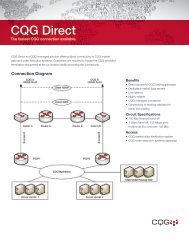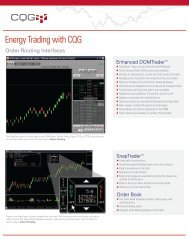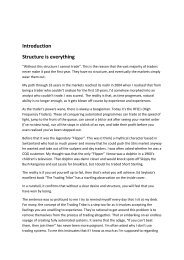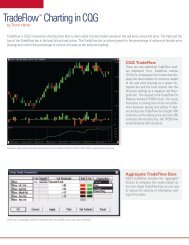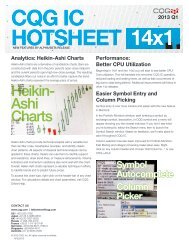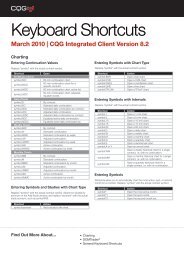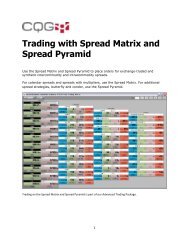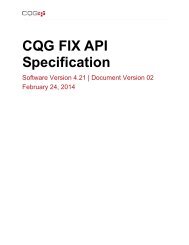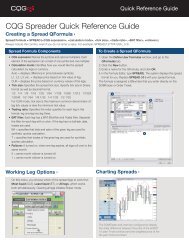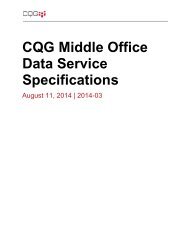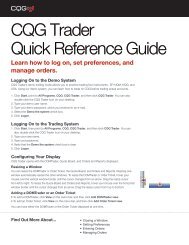Trading Time. - CQG.com
Trading Time. - CQG.com
Trading Time. - CQG.com
You also want an ePaper? Increase the reach of your titles
YUMPU automatically turns print PDFs into web optimized ePapers that Google loves.
2 Market<br />
Profile®<br />
What you will learn in this chapter<br />
S<br />
Origins of Market Profile®<br />
This study originated in the grain pits at the CBOT in the early 1980s. Peter Steidlmayer,<br />
an exchange local, found that for much of the time price simply ebbed and flowed with<br />
the pit traders. He noted that it was orders <strong>com</strong>ing into the pit that dictated when price<br />
trended. He came to the conclusion that he needed to find a way to distinguish between<br />
the short, medium, and long-term trader, and thus Market Profile® was born.<br />
My own theories came from my time at Fulton Prebon and Dean Witter. I started in<br />
<strong>com</strong>modities and FX at Rudolf Wolff and then found myself trading and broking the<br />
alien T Bond contract. The vast majority of the customers were day traders who traded<br />
large volume intraday, although they would sometimes take a core strategic position. It<br />
was my job to identify the short-term moves, advise clients, and, for some, take<br />
proprietary positions on their behalf. Whilst the touch and squawk boxes were valuable<br />
tools, any other help would be devoured. At the time the buzz was going round the bond<br />
pits that Market Profile® was fast be<strong>com</strong>ing the greatest day-trading tool. Up to that<br />
point, with <strong>com</strong>puters still in the dark ages, daily pivot points were the most <strong>com</strong>monly<br />
used tool. Their dominance in the pit was such that they were successful often because<br />
they were the only reference anyone had. Pivot theory remains a <strong>com</strong>mon method of<br />
obtaining short-term supports and resistances, although the trading structure and<br />
implementation are far more sophisticated today. When these levels coincide with<br />
Market Profile®-based levels the chance of success is increased.<br />
In the absence of software to record and analyze Market Profile®, the voice broker would<br />
give us the range as each 30-minute period <strong>com</strong>pleted and I would keep records manually<br />
on graph paper. At that time, there was no real theory or literature. It was also not<br />
possible to know the values of certain elements such as those associated with volume.<br />
Therefore, all the theories and conclusions I came to were my own and were concentrated<br />
solely in the area of price action. Volume and time information was noted along with the<br />
positioning of the locals. Manually writing the Market Profile® charts led me to<br />
understand how the close of the previous day related to the opening of the current day. In



